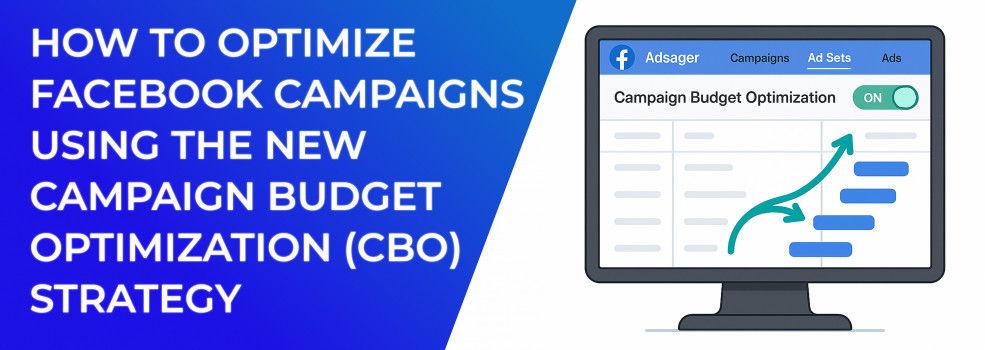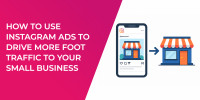Facebook’s Campaign Budget Optimization (CBO) has moved from an experimental toggle to the default funding method that Meta now recommends. If you still divvy up spend by hand for every ad set, your growth is probably suffering along with your Facebook ad performance metrics. This guide explains how to activate CBO, structure campaigns the right way, and keep costs low while reach and return on ad spend climb.
1 | What Exactly Is CBO and Why Is Everyone Talking About It?
Campaign Budget Optimization automatically shifts your daily or lifetime budget among ad sets in real time. Instead of guessing which audience deserves more money, Facebook’s delivery system places higher bids where it predicts stronger results based on impressions, expected conversion rate, and forecasted cost.
Here are three immediate benefits you will feel once CBO is live:
-
Less babysitting. You can sleep through the night without 2 a.m. tweaks just to protect your average cost-per-click.
-
Higher consistency. Real-time re-allocation evens out those wild daily swings that make managers question your Facebook ad optimization plan.
-
Built-in scaling. When an audience suddenly takes off, CBO can funnel extra budget toward it before tomorrow’s report even runs.
Meta’s internal data from April 2025 shows advertisers who switched to CBO saw an average 17 percent lift in ROAS within six weeks. That is a strong argument for giving the algorithm room to breathe.
And if you ever run into the dreaded “Ad Set May Get Zero” message, we break down the causes and the quick fixes in this step-by-step guide.
2 | When to Use CBO and When to Hold Back
Before we jump into audience setup, it helps to know whether CBO is the right tool for your current campaign goal. Review the table below and keep the notes in mind as you plan.
When you decide to leave CBO off, be sure you have a clear operational reason. Otherwise you are likely turning away free efficiency.
3 | Structuring Your Campaign for CBO Success
A solid structure is half the battle. The paragraphs below give you a framework you can copy-paste into Ads Manager today.
For a deeper refresher on picking audiences, we walk through core principles in Facebook Ad Targeting 101.
First, keep audiences distinct but not duplicative. Segment by intent instead of stacking dozens of micro interests. A clean structure might look like this:
-
Custom audiences (website visitors, email subscribers)
-
1 percent lookalikes (highest match quality)
-
Broad interest targeting (stacked interests such as fitness + vegan + eco-friendly)
-
Behavior targeting (online shoppers, device type)
Give each ad set one clear job so CBO can decide where to push extra spend without overlapping impressions or inflating ad frequency.
Second, minimize in-campaign variables. If you want to A/B test landing pages or headline styles, run those tests outside the CBO campaign or change only one element at a time. Too many moving parts confuse the algorithm and drag out learning.
Finally, think twice before adding bid caps. Begin uncapped. After you have 50 conversions and reliable data, add a gentle cost-per-result ceiling if your CPM suddenly spikes.
4 | Turning On CBO: A Rapid Walk-Through
Ready to flip the switch? Follow the steps below. A few toggles in the wrong place can reset learning and waste days of budget. Use this sequence to avoid re-work.
-
In Ads Manager, click Create Campaign, choose Buying Type: Auction, and toggle Campaign Budget Optimization to ON.
-
Select Daily or Lifetime budget. Allocate at least 50 times your target CPA per week to give the algorithm enough data.
-
Pick your primary objective. If you track revenue, choose Highest Value to push spend toward high-basket buyers.
-
Build each ad set with a unique audience (see Section 3 for examples).
-
Launch and leave budgets untouched for at least 72 hours. The learning phase is sacred, editing budgets too soon restarts the clock.
For three days you may see uneven spend. Let the system stabilize before you judge results. Real improvements usually appear by day five.
Not sure which goal matches your funnel stage? We decode every option in Meta Ad Campaign Objectives Explained.
5 | Key Facebook Ads Performance Metrics to Watch
Data without context can mislead. Use these ranges as directional waypoints, not hard rules. Different verticals have different benchmarks, but if you drift outside these lines, start troubleshooting.
We also outline how to go beyond surface-level metrics in How to Analyze Facebook Ad Performance Beyond CTR and CPC.
Remember to compare each metric with at least seven days of historical data so single-day noise does not trigger unnecessary changes.
6 | Five Advanced CBO Optimization Tips
Before we dive into advanced tactics, understand that each suggestion below assumes you already have the basics nailed. Implement one tip at a time so you can attribute improvements correctly.
-
Exploit day-parting with automated rules. Pause spend in low-converting hours such as 1 a.m. to 5 a.m. local time, then resume automatically.
We’ve documented our favorite rule templates in How to Use Automated Rules to Improve Facebook Campaign Efficiency. -
Layer broad plus Advantage+ audiences. Run a classic broad ad set alongside an Advantage+ Shopping campaign and let CBO choose winners.
-
Use Dynamic Creative Optimization for micro-split testing. Facebook will find the best mix of headline, image, and call-to-action faster than manual testing.
-
Combine CBO with multi-bid strategies. Duplicate an existing campaign and switch the bid type to Cost Cap. Auction diversity can pull down average CPC across the whole account.
-
Recycle post IDs. When swapping new creative, keep the same post ID to preserve likes and comments, which bump click-through rate by up to 15 percent.
Each of these tactics works because it gives the delivery system cleaner signals or more room to explore. Try one for at least a full week before stacking the next.
7 | Troubleshooting Common CBO Problems
No optimization guide is complete without a help section. The paragraphs below outline frequent complaints and quick fixes.
When spend piles into one ad set, run an “engine check” for overlap and fatigue.
Problem: Spend clusters in one ad set and ignores others.
Likely cause: That ad set is genuinely outperforming. First confirm audiences do not overlap. If clean, resist the urge to “balance” spend, let your star player keep playing.
Problem: CPM balloons overnight.
Likely cause: Audience saturation or seasonal auction pressure (for instance, Prime Day ads). Lower ad frequency by refreshing creative or extending reach.
Problem: ROAS tanks after scaling budget.
Likely cause: Doubling budget can reset learning. Scale 20 percent every other day or duplicate the campaign at a higher budget so the original keeps its history.
Document each change inside Ads Manager notes so you can reverse anything that backfires.
8 | Putting It All Together
Switching to CBO alone will not turn failing ads into winners, but pairing it with disciplined Facebook ad optimization habits will. Focus on sharp creative, audience separation, and thoughtful budget increases. Let CBO handle the heavy lifting of reallocating spend while you steer strategy with data.
If you want deeper help untangling CBO setups or automating audience creation, the LeadEnforce team is one chat away. Clear structure and patient iteration will push your Facebook ad performance to new highs without endless manual tweaks.

